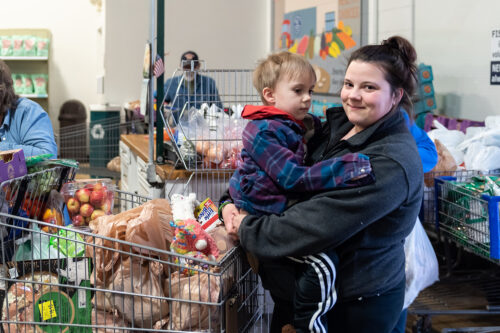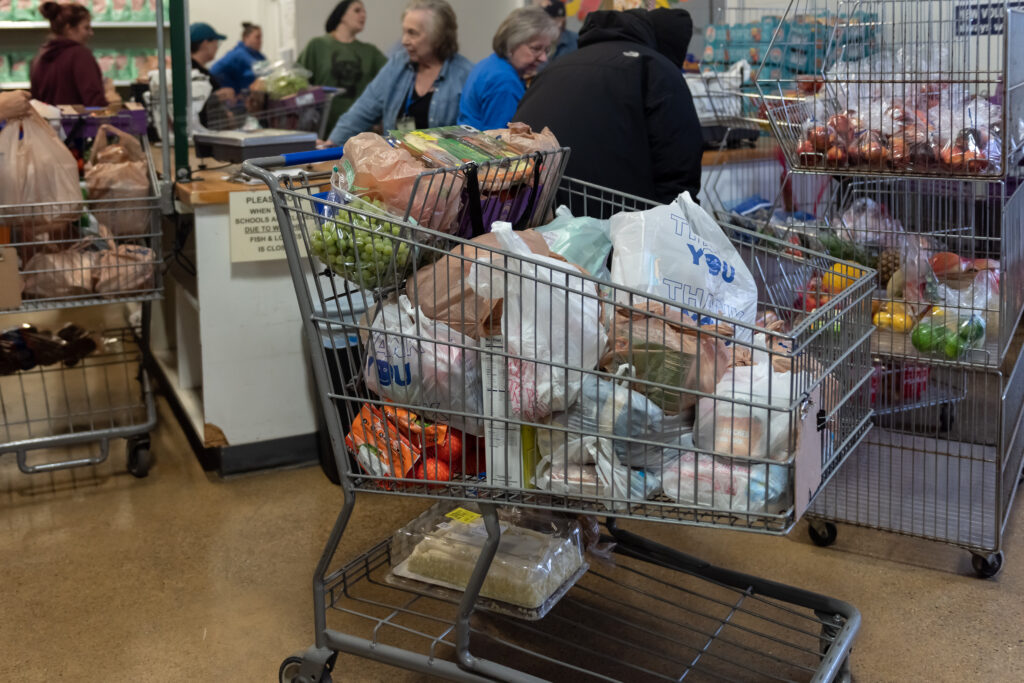
Community Information Exchange: Providing Coordinated, Human-Centered Care
At 83, Clara Rigsby was hospitalized with double pneumonia and strep. The persistent shortness of breath and other symptoms terrified Clara.
The financial ramifications of the hospital stay were just as scary.
Since retiring from her career in nursing in 2003, Clara has made do on a fixed income. As rising costs due to inflation chipped away at her already tight budget, Clara’s shopping list was shortened. She drank less milk, passed on eggs, and bought the cheaper brand of TV dinners with lower-quality ingredients.
Clara is not alone. In 2020, 1 in 15 seniors (6.8%) were food insecure, according to Feeding America. Like many others, Clara kept her struggles to herself. But when the case manager at Henry Ford administered the the social determinants of health survey and asked Clara whether she had enough food at home, she decided it was time to break her silence.
With Clara’s consent, her survey response was entered into Henry Ford’s electronic medical record system, which then automatically shared her referral information with United Way for Southeastern Michigan and Fish and Loaves – a client-choice food pantry in Taylor. When Clara was released from the hospital, she received a call from one of United Way’s social navigators who made an appointment for Clara at the pantry, offered transportation through Ride United and shared details of other programs and support services Clara may be eligible for.
This interaction was part of Connect4Care, a Southeastern Michigan Community Information Exchange (CIE)™, supported by United Way. The CIE is transforming health and social services through information sharing and coordinated care. With permission and oversight, agencies within the CIE share information about clients, services, inventory capacity, and programs to benefit the community.
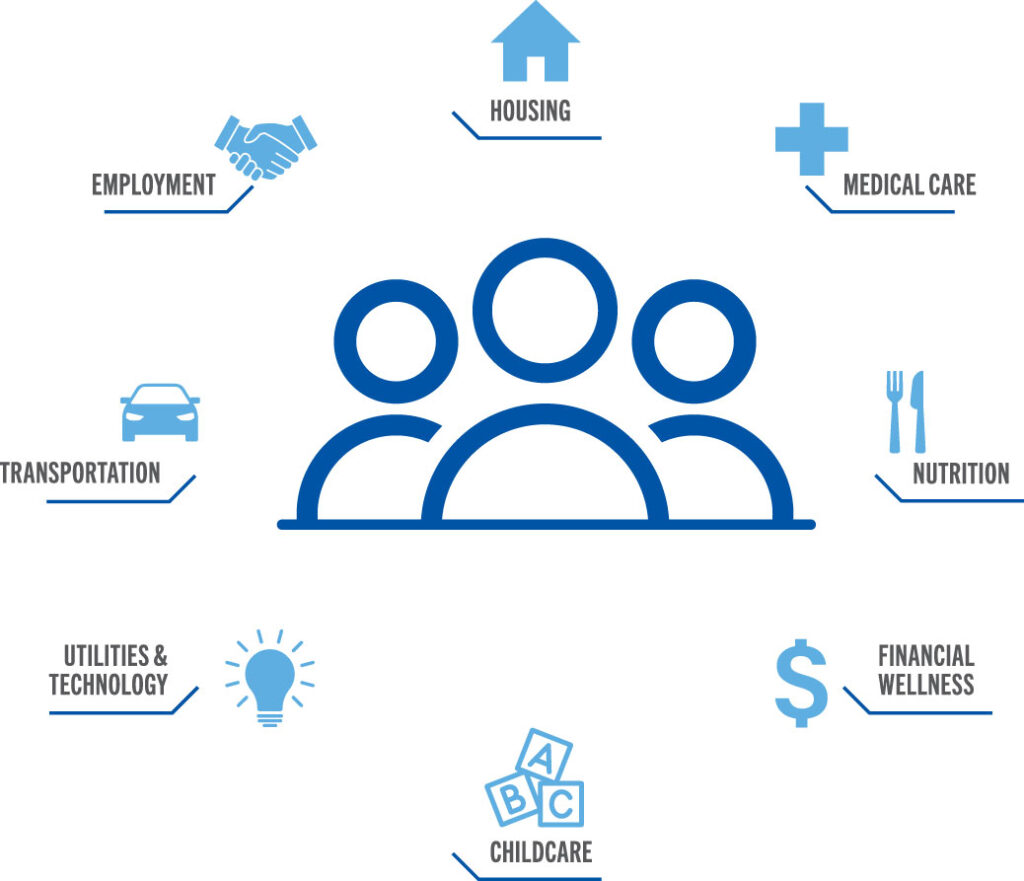
The partnership with Henry Henry Ford Health, Gleaners and local food pantries is an example of Connect4Care in action. It began with a closed loop referral pilot, which launched in 2021, that sought to better identify the needs of community members and match those needs to agencies in an efficient, dignified and seamless way.
Within seven months, the program expanded and now operates at five Henry Ford clinics (Templin, Allen Park, Taylor, Woodhaven and Brownstown) and Wyandotte Hospital. The program is currently onboarding new food pantries in Redford and Detroit, as well as the Detroit Area Agency on Aging and Wayne Health Mobile Health Units.
Expanding the Impact of 2-1-1
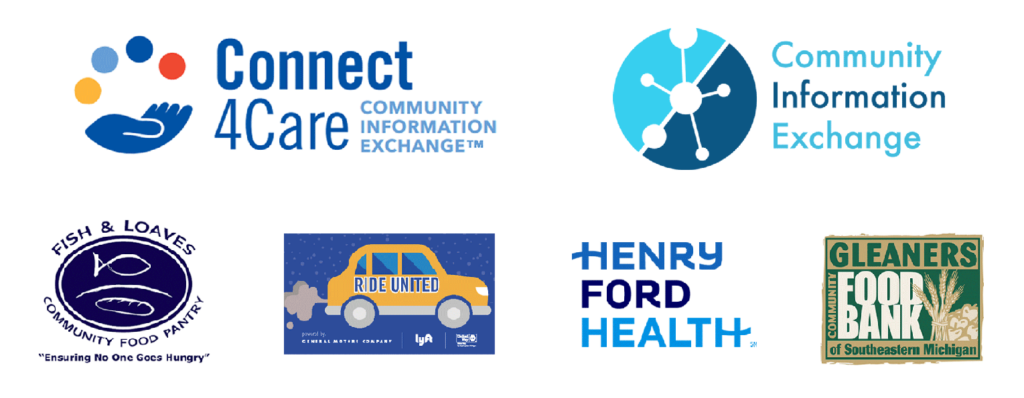
“It’s not just a program,” said Esperanza Cantu, director, health initiatives at United Way for Southeastern Michigan. “CIE is a network of organizations that have signed on to say that collaborative care is a value. We want to provide more dignified, respectful care for people. The way we do that is by changing how we work together.”
For Clara, the experience with Henry Ford Health opened her eyes to new possibilities and new relationships.
“I didn’t even think that help was available,” Clara said after her first trip to the food pantry, which was scheduled by Jennifer Ledbetter, one of United Way’s nine social navigators. “Not only did she (Jennifer) help me, she followed up, made my appointment and we talked for quite a while. It was like she really cared.”
The social navigator role builds on the success of United Way’s 2-1-1 team by providing more hands-on assistance for community members navigating resources. In 2022, 2-1-1 provided 451,523 referrals to programs to assist with food, housing, financial assistance, utility assistance and more. Most 2-1-1 referrals require individuals to follow up with service providers while social navigators are able to reach out on behalf of clients and even enroll or book services on behalf of clients – further eliminating any potential barriers to help.
Jennifer spent eight years as a 2-1-1 community care advocate before becoming a social navigator. In this role, she says, she’s found her calling.
Of the 384 people referred through the CIE partnership with Henry Ford Health, 27 percent received information or assistance from a social navigator and 16 percent visited Fish & Loaves Food Pantry and received food. Of those who received food, 61 percent visited the pantry more than once. While these figures might seem low, they are on par with national trends: an evaluation of CMS’ national Accountable Health Communities (AHC) model, which tested whether connecting Medicare and Medicaid beneficiaries to community resources can improve health and reduce cost, they found only 14% of people had their needs resolved.
“I’m able to spend a lot more time talking to people and making sure they’re getting the help they need,” Jennifer said. “You can actually hear the relief in their voice at the end of a call. It doesn’t get better than that.”
2-1-1 has been a strong community resource for more than 20 years and will always be there for people to provide anonymous information and referral.
“But we also felt the call to action to say we need to take this a step further and build infrastructure that works better not just for organizations but for people,” Esperanza said.
Building Strength, Building Bridges
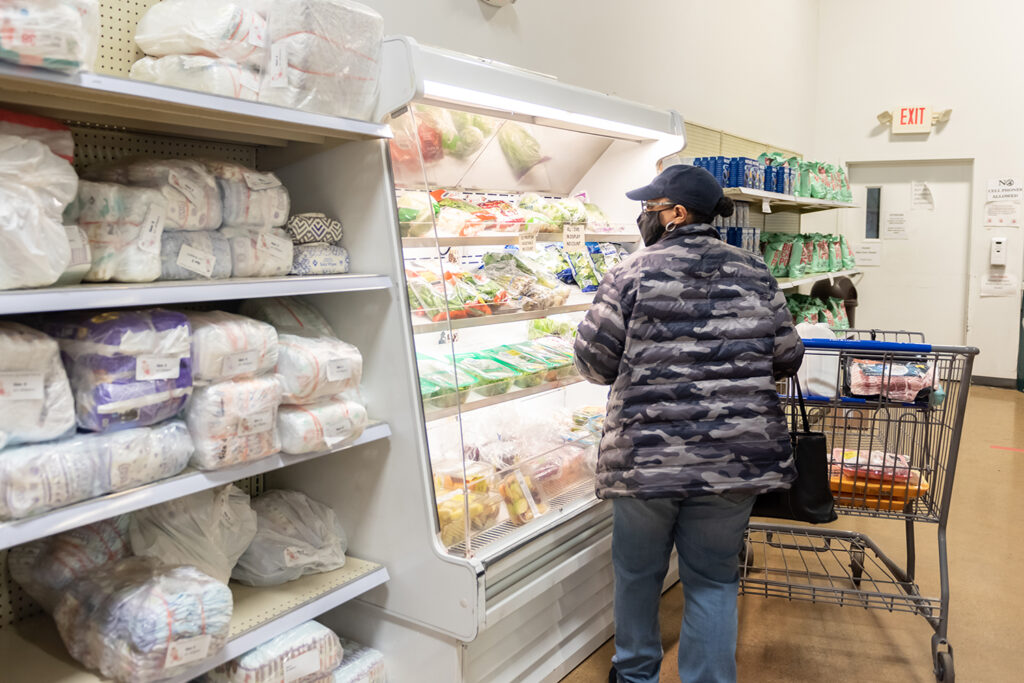

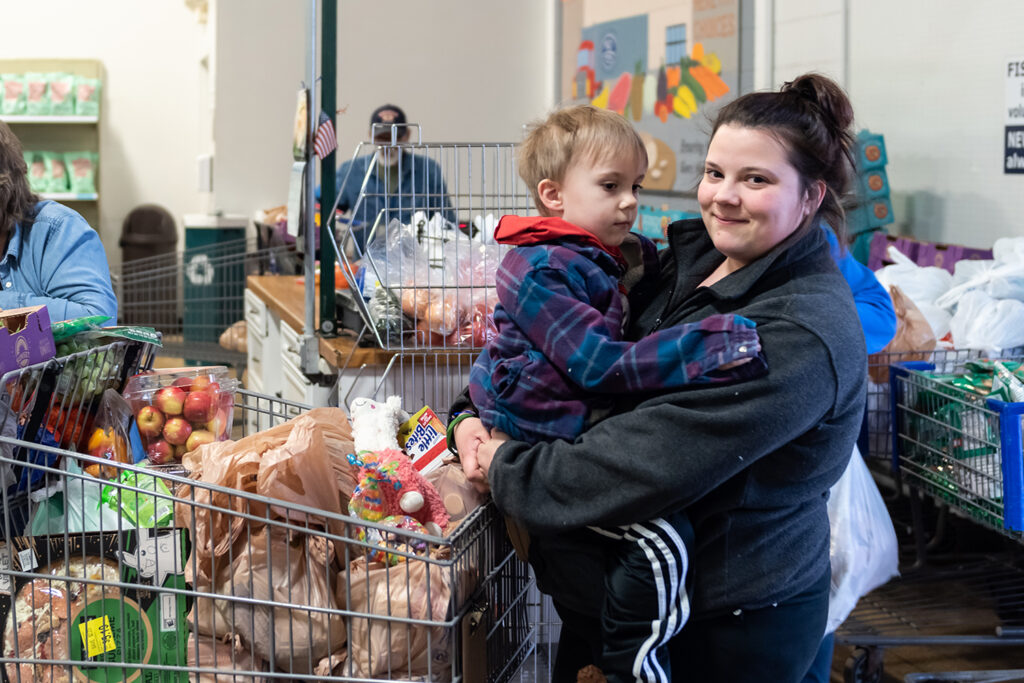
Gleaners and United Way have long been partners in the fight against hunger. The Connect4Care partnership was a natural way to build on that work with a shared interest in providing more comprehensive support to individuals and families while also using data integration to better assess trends in food insecurity.
“I felt very fortunate to be a part of the conversation right from the get-go,” Denice Leduc, director of volunteers and service insights at Gleaners Community Food Bank of Southeastern Michigan, said. “United Way is so committed to doing things the right way; not putting a solution on the table without true meaningful input from all of the players.
“That’s been the basis of the success we’ve seen so far – that effort to make sure that the people who are on the ground are part of the decision making.”
With Connect4Care, United Way envisions a “no wrong door” approach for seamless access to needed services. When organizations are no longer working in silos, they will be able to work together in better service of people’s holistic care, allowing broader insight into community needs, proactive planning and resource allocation.
“In the past, we couldn’t directly make food pantry appointments and arrange other supportive services like transportation because our systems weren’t talking to each other,” Esperanza said. “The CIE’s technical infrastructure powers our ability to make navigation of services seamless and with this, the undisputable data on needs and strengths to inform investments and policy advocacy for the better of the community.”
Service Made Seamless

Connect4Care is supported by a technology infrastructure years in the making. Brightstreet Group worked closely with healthcare and food pantry providers to integrate systems and streamline processes that work better for people. Through CIE technology, United Way has enhanced how community members can connect to services; flagship programs such as Ride United and Connect4Care Kids depend on this same infrastructure.
It marks the first time these organizations will share data in an effort to provide a more seamless client experience rooted in the 2-1-1 resource directory, which includes information for over 1,500 agencies at 2,600 sites, with over 8,500 programs.
“We know navigating resources is really difficult for people, which is why our 2-1-1 helpline is such a critical resource,” Esperanza said. “With the CIE, we’re able build on 2-1-1 to improve how people connect to services and how agencies can better meet people’s needs. For example, while some people prefer to work with an agency to navigate resources, others may want to do this on their own. The CIE helps us make warmer connections by understanding what programs or services people are already using, providing information and resources, and understanding whether or not people got the assistance they needed.”
“If people don’t have the food they need then it’s hard for them to move beyond that.”
Data is an integral part of a successful CIE. United Way and our partners are continuing to engage the community through interviews to learn about community members’ comfort and interest in sharing personal information and in helping to make decisions about how a CIE works in our region.
Eventually, the CIE will improve the overall health of the community, which food pantry partners say couldn’t come at a better time. As inflation continues to impact household budgets and COVID-era assistance programs end, the need is greater than ever.
“If people don’t have the food they need then it’s hard for them to move beyond that. It’s hard to think about work or about education or really anything,” said Stephanie McNees, executive director at Fish & Loaves.
When people have access to food and other resources needed to thrive, the possibilities are endless.
“That’s the grand vision,” Esperanza said. “People are healthier – they live better lives – for longer. When we talk about health equity, that’s what we mean. We’re having to take apart what we’ve built and reassemble it in a way that works better for everyone.”
